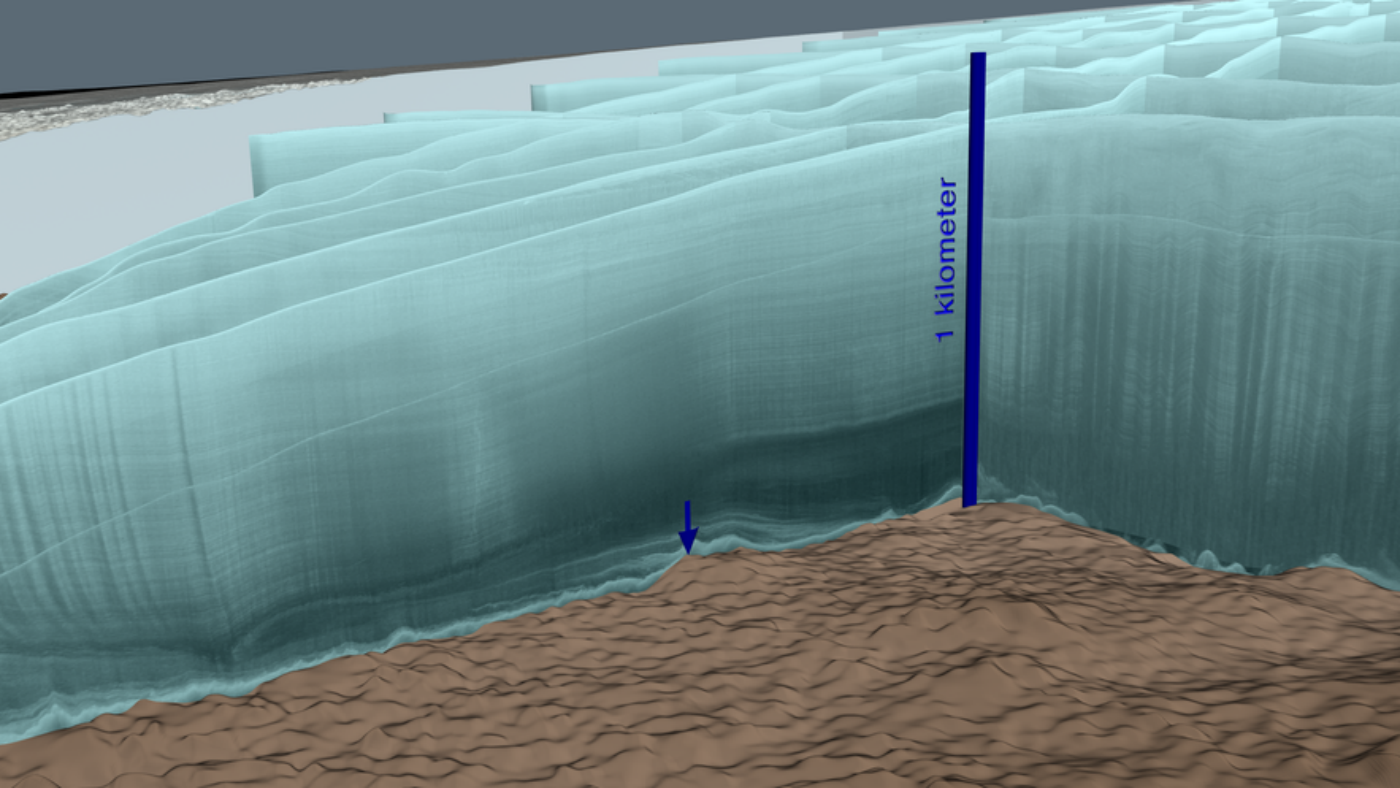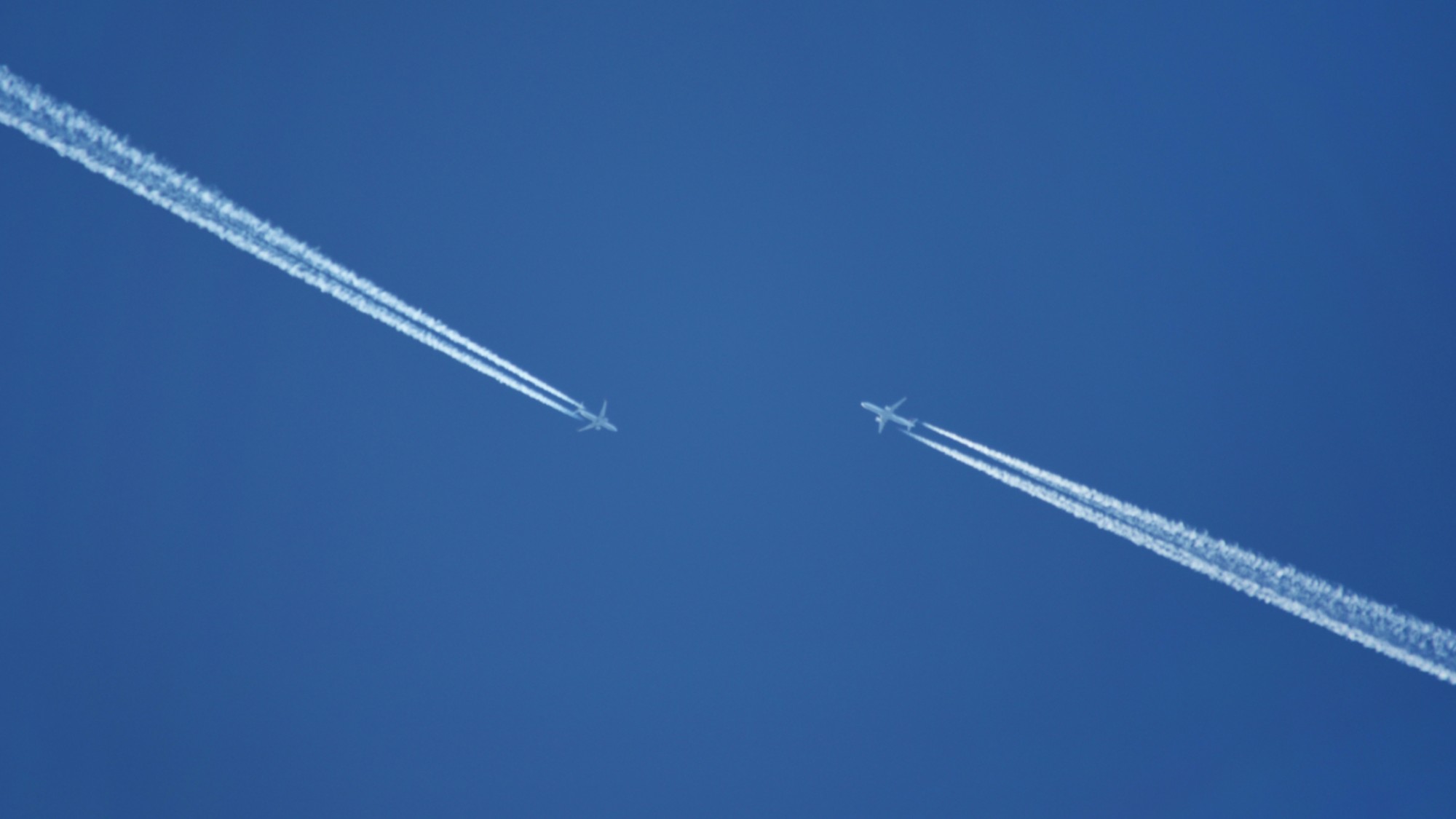Why is there a 19-mile crater below Greenland?
Researchers chance upon vast meteorite hole beneath surface ice sheet

A city-sized crater hidden beneath a massive ice sheet for centuries has been found in northwest Greenland.
The massive hole is more than 19 miles wide and 300 metres deep, and is believed to have been formed when an iron meteorite smashed into the Earth around three million years ago. If confirmed, it would be the first impact crater ever found under ice, says National Geographic.
The potentially landmark discovery was made by an international team led by researchers from the University of Copenhagen’s Centre for GeoGenetics at the Natural Museum of Denmark. The researchers - who have published a paper about their find in journal Science Advances - chanced upon the crater while examining radar images used to map the topography beneath Greenland’s ice sheets.
The Week
Escape your echo chamber. Get the facts behind the news, plus analysis from multiple perspectives.

Sign up for The Week's Free Newsletters
From our morning news briefing to a weekly Good News Newsletter, get the best of The Week delivered directly to your inbox.
From our morning news briefing to a weekly Good News Newsletter, get the best of The Week delivered directly to your inbox.
After noticing a circular impact under what is known as the Hiawatha Glacier, the researchers have spent the past three years working out exactly what it might be. They have concluded that it is one of the 25 largest impact craters on Earth, according to a report from Nasa, which was involved in the research.
“The crater is exceptionally well-preserved and that is surprising because glacier ice is an incredibly efficient erosive agent that would have quickly remove traces of the impact,” said study author Professor Kurt Kjaer.
In order to confirm the crater’s age, the scientists will have to drill through more than half a mile of ice in order to collect rocks for laboratory dating.
“We would endeavour to do this - it would certainly be the best way to get the ‘dead fish on the table’, so to speak,” Kjaer told the BBC.
A free daily email with the biggest news stories of the day – and the best features from TheWeek.com
Dating the crater’s age would allow scientists to find out if the meteor impact occurred during the last Ice Age, which ended approximately 11,700 years ago.
If so, it could reignite interest in the Younger Dryas impact hypothesis, a theory which suggests that an intense period of cooling at the end of that Ice Age was precipitated by an impact from one or more large comets in North America, says Science magazine.
That suggests the impact of the crater might have impacted the history of the planet.
You can watch Nasa’s video showing how the crater discovery came together here:
-
 8 incredible destinations to visit in 2026
8 incredible destinations to visit in 2026The Week Recommends Now is the time to explore Botswana, Mongolia and Sardinia
-
 Wave of cancellations prompt Kennedy Center turmoil
Wave of cancellations prompt Kennedy Center turmoilIN THE SPOTLIGHT Accusations and allegations fly as artists begin backing off their regularly scheduled appearances
-
 The dark side of how kids are using AI
The dark side of how kids are using AIUnder the Radar Chatbots have become places where children ‘talk about violence, explore romantic or sexual roleplay, and seek advice when no adult is watching’
-
 Environment breakthroughs of 2025
Environment breakthroughs of 2025In Depth Progress was made this year on carbon dioxide tracking, food waste upcycling, sodium batteries, microplastic monitoring and green concrete
-
 Crest falling: Mount Rainier and 4 other mountains are losing height
Crest falling: Mount Rainier and 4 other mountains are losing heightUnder the radar Its peak elevation is approximately 20 feet lower than it once was
-
 Death toll from Southeast Asia storms tops 1,000
Death toll from Southeast Asia storms tops 1,000speed read Catastrophic floods and landslides have struck Sri Lanka, Indonesia, Thailand and Malaysia
-
 Can for-profit geoengineering put a pause on climate change?
Can for-profit geoengineering put a pause on climate change?In the Spotlight Stardust Solutions wants to dim the sun. Scientists are worried.
-
 How will climate change affect the UK?
How will climate change affect the UK?The Explainer Met Office projections show the UK getting substantially warmer and wetter – with more extreme weather events
-
 Can the UK do more on climate change?
Can the UK do more on climate change?Today's Big Question Labour has shown leadership in the face of fraying international consensus, but must show the public their green mission is ‘a net benefit, not a net cost’
-
 Did Cop30 fulfil its promise to Indigenous Brazilians?
Did Cop30 fulfil its promise to Indigenous Brazilians?Today’s Big Question Brazilian president approves 10 new protected territories, following ‘unprecedented’ Indigenous presence at conference, both as delegates and protesters
-
 Can the world adapt to climate change?
Can the world adapt to climate change?Today's Big Question As the world gets hotter, COP30 leaders consider resilience efforts